Overcoming WFH isolation using HR tech
The COVID-19 pandemic has had an unexpected, irreversible impact on our personal and professional lives. Around the world, people of all ages have been forced into “social distancing,” quarantines, and isolation in order to control the virus’ spread. Businesses have been shuttered, bars and restaurants have taken huge financial hits and millions are unemployed or on unpaid leave.
For employees of traditionally office-based companies— like us—workdays have shifted from sitting with colleagues and friends to working from home, relying on video conference calls to keep in touch with our teammates (and maintain our social skills).
Digital communication tools—video conferencing, WhatsApp, and social networks—are keeping us connected to our families, friends, and the outside world at large. HRIS and work communication solutions like Zoom, Slack, and Bob are keeping us afloat and productive at work.
bob, HiBob’s HR platform was built with periods like these in mind: to help companies connect and engage their teams, and to deepen their relationships from across miles and time zones.
The top two engagement tools used by Bob customers are Shoutouts sent out through the platform and Kudos posts sent to say thank you.
Developing remote engagement techniques
In order to verify the usefulness of HiBob’s platform, Bob, for our customers during the COVID-19 pandemic, we analyzed usage trends of the Shoutout and Kudos posting features between 1/5-12/2020 (pre-COVID-19 spread in Europe and US) and 3/9-22/2020 (after the spread of COVID-19) to see the effect of remote WFH isolation imposed on employees during the global COVID-19 spread.

Social media-style updates
Employees have increased the use of Shoutouts to communicate important, fun, and/or newsworthy company information both company-wide and for specific teams. During the weeks between March 9-22, 2020, when the COVID-19 pandemic was spreading rapidly and employees worldwide had begun working from home:
- Shoutouts increased by 62% (compared to the first 12 days of January 2020)
- The number of reactions to the posts (emojis, likes, etc) increased by 173%
- The average number of comments and reactions per Shoutout grew from 3.0 in January to 5.1 in March 2020

Recommended For Further Reading
GROWTH IN THE NUMBER OF SHOUTOUTS AND THE REACTIONS TO THEM (2020)
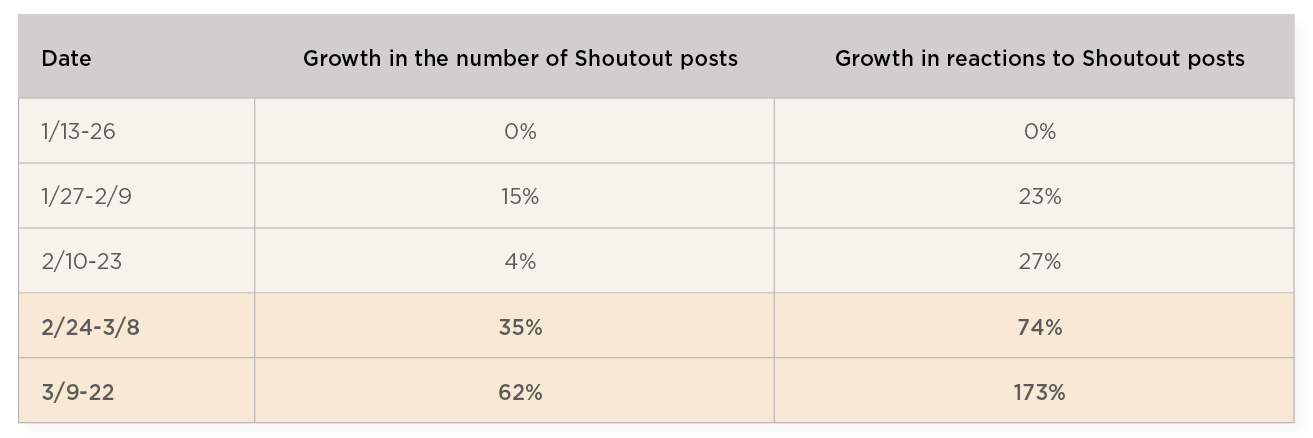
GROWTH OF SHOUTOUT POSTS AND THE REACTIONS TO THEM (2020)

GROWTH IN THE AVERAGE NUMBER OF COMMENTS AND REACTIONS PER SHOUTOUT (2020)

GROWTH IN THE AVERAGE NUMBER OF COMMENTS AND REACTIONS PER SHOUTOUT (2020)
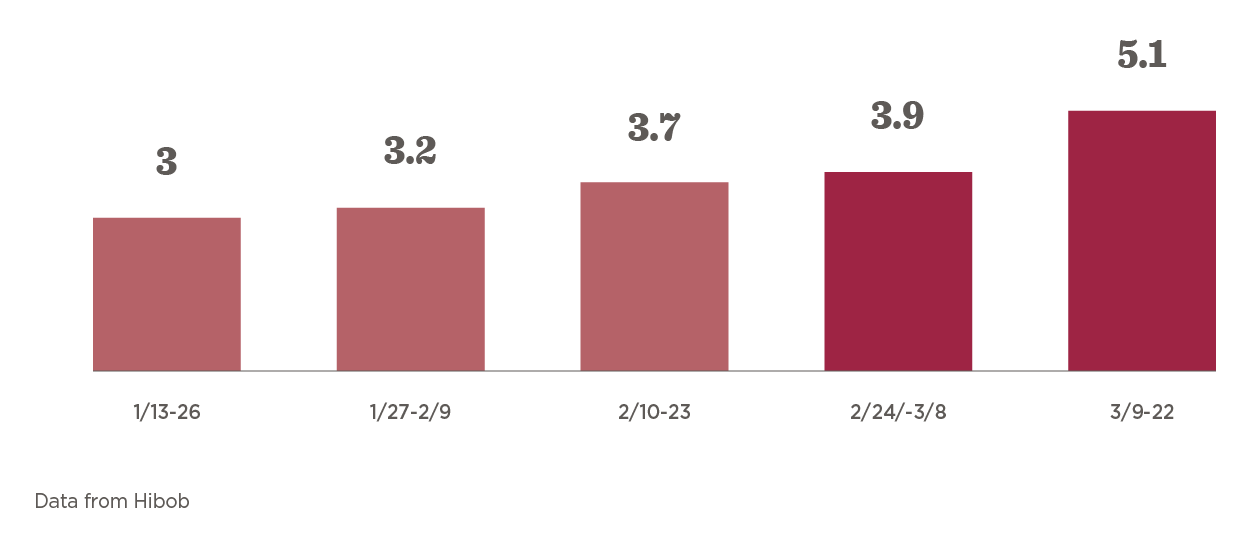
Kudos: Saying thank you
During the time period of 3/9-22 when the COVID-19 pandemic continued to spread widely in Europe and the US, Kudos posts increased by 85% compared to the first weeks of Jan 2020) and comments and reactions to them increased by 29% (compared to the first weeks of Jan 2020). The average number of comments for a given post decreased from 6.9 at the beginning of 2020 to 6.0 but has been climbing up week after week since.
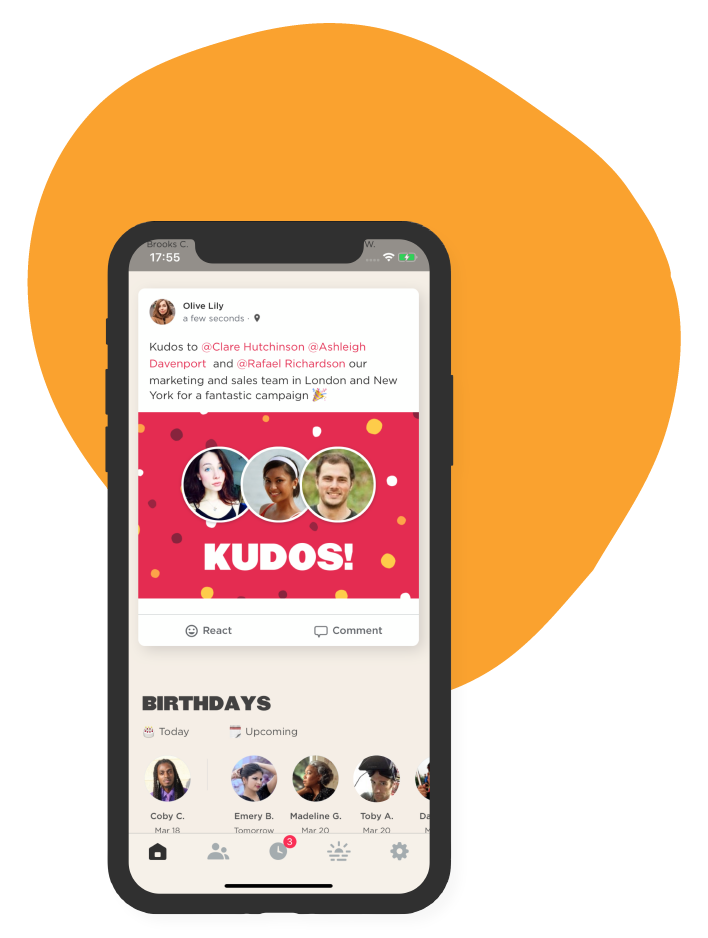
GROWTH IN THE NUMBER OF KUDOS POSTS AND THE REACTIONS TO THEM (2020)
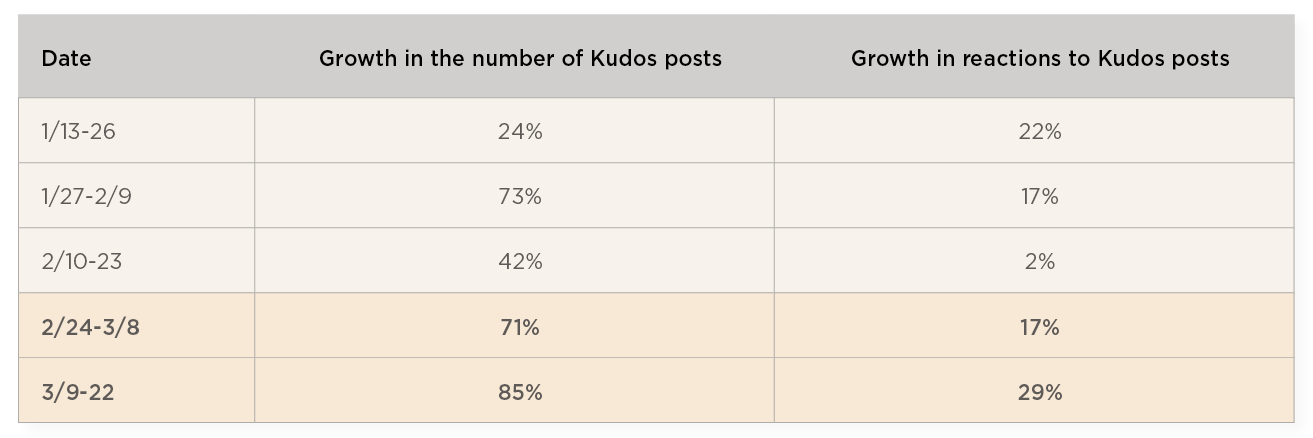
GROWTH IN THE NUMBER OF KUDOS POSTS AND THE REACTIONS TO THEM (2020)

AVERAGE COMMENTS AND REACTIONS PER KUDOS POST (2020)
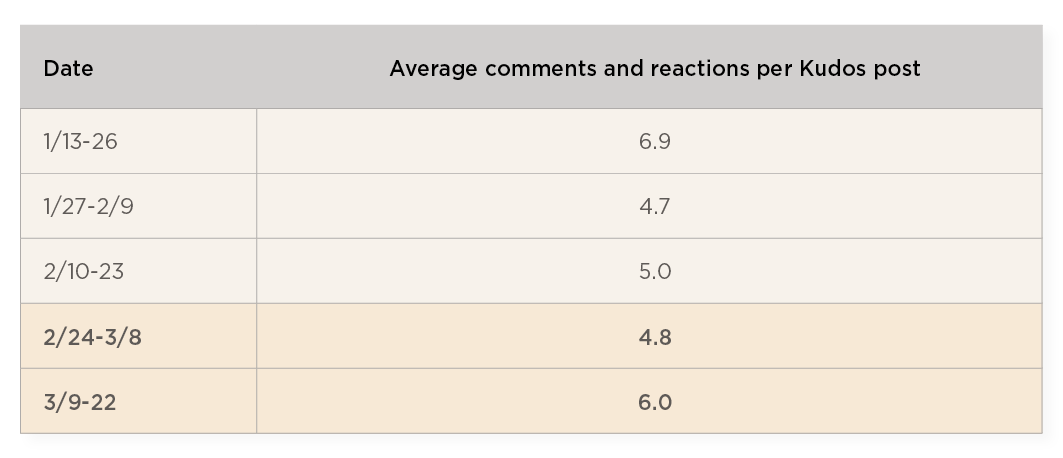

AVERAGE COMMENTS AND REACTIONS PER KUDOS POST (2020)
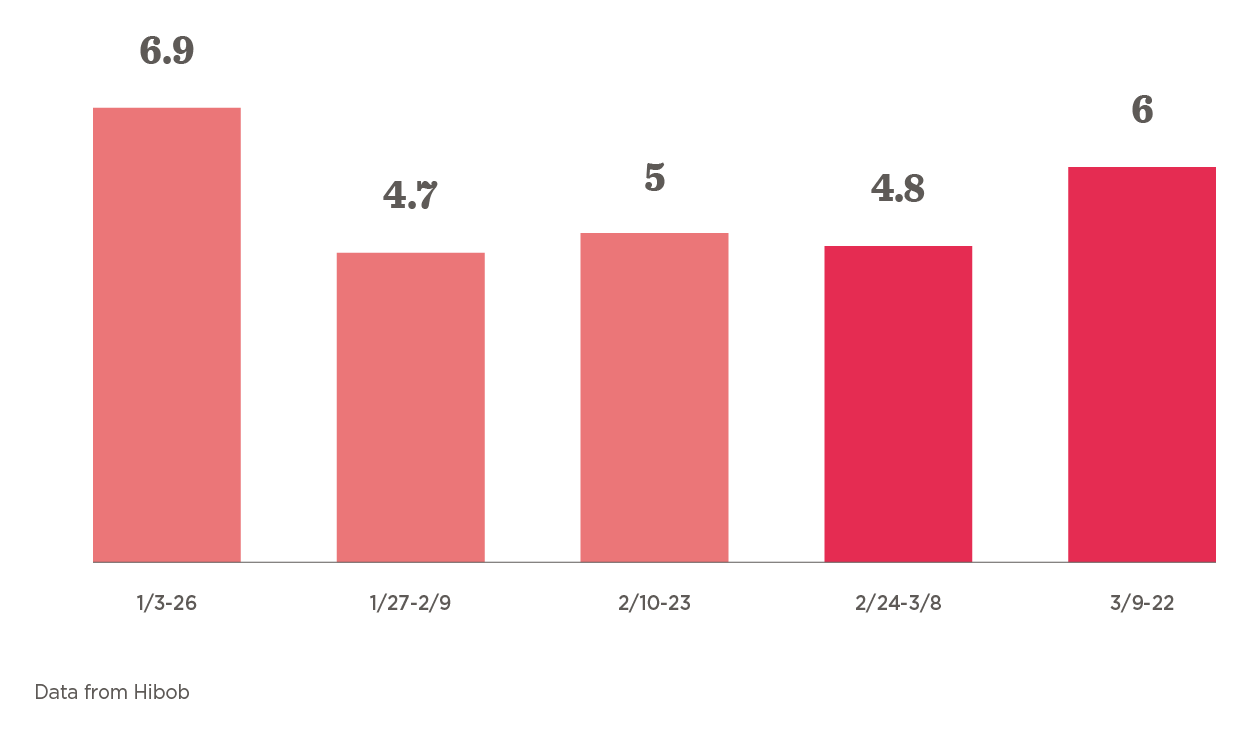
Summary
Employees, maintaining engagement practices is critical to ensuring their well-being throughout this critical period. Abruptly removing employees from the office environment they’ve grown to know and associate with your work culture puts culture at risk and is likely to make employees feel disengaged from their team and teammates.
To minimize this risk, keep employees in their established flow of work by putting emphasis on your established toolkit. Strengthening communication practices in your existing chat platforms, for example, will help employees feel connected and in touch with each other. Utilizing Bob’s Shoutout and Kudos features will give employees a broader look at what their teammates are accomplishing and help them feel closer to their not-immediate connections.
People managers working hard to preserve a sense of normalcy for their teams, working with a familiar tech stack will help them navigate abrupt changes to familiar workflows. Understanding what employees are working on and how they’re working together will help you keep an eye on team dynamics. Utilizing Bob features like time and attendance tracking will help you keep employees from burning out.
HR leaders, who are taking charge of this transition, maintaining consistency will mitigate some of the pressure of moving to a fully-remote model. By utilizing the same tools and communication platforms as you worked within the office, you can stay in touch with everyone in the organization, top to bottom, exactly as before. Keeping your workflow as similar as possible to what came before in a time of crisis will have a ripple effect down to people managers and employees who are relying on you to stay calm.
Scary times demand positive measures. Taking advantage of existing tech tools to facilitate communication and relationship-building can be the difference between loneliness and collaborative cohesion.
While government protocols (and common sense) may demand physical isolation during the COVID-19 pandemic, employees can still feel connected to each other using digital technology.
We’ve seen a marked, quantifiable increase in engagement and cohesiveness throughout these uncertain times, specifically in interactions between employees.
In 2020, it’s time to make smarter decisions when it comes to your people and organization.
To learn more about HiBob and our data-driven tools, get in touch with us at [email protected]

